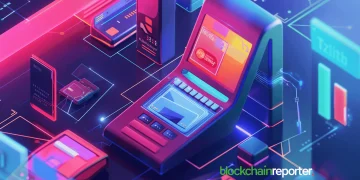The world of blockchain is vast, and it can be easy to get lost in the small, everyday trends that may or may not work out in the end. However, it cannot be understated that blockchain technologies have changed the tech space forever.
These changes include DEXs slowly replacing banks, NFTs becoming a worldwide sensation, and GameFi applications of blockchain making their way into the Metaverse. All of these have started in just the last few years, so what’s the next step?
Today, we’ll be looking at some of the largest megatrends in recent blockchain history and how they’ve changed the world for the better, as well as SocialFi networks like Taki aiming to change the way we approach social networks.
DeFi – Taking Finance Away From Corruption
DeFi, or decentralized finance, takes advantage of existing technologies like oracles, digital assets, smart contracts, and crypto-wallets in order to create decentralized financial ecosystems. In this way, DeFi applications can cut out brokers, banks, and exchanges from transaction management and processing.
One of its biggest advantages is the usage of smart contracts – immutable code written on the blockchain that ensures all contracts are followed. These contracts can easily monitor loan agreements, only to release collateral when fully repaid or facilitate DEXs in letting their users buy assets safely.
DeFi platforms like PancakeSwap and Osmosis have irreversibly changed the blockchain landscape by providing a permissionless and inclusive way for users to engage in finance. They feature real-time, transparent transactions that can be viewed by anyone. This keeps them free from corruption amidst a time when national banks are looking less and less trustworthy.
Since smart contracts are all created in an essentially immutable blockchain and will automatically execute their code when conditions are met. This makes them tamper-proof and ensures lower delays. It’s also extremely easy to audit them, as most of them are built on top of open-source code. This is even better for developers, as they can use multiple DeFi applications built on top of open-source tech in order to make brand new products.
Today, DeFi accounts for around $80 billion in value and is poised to increase in the future.
NFTs – Being Able To Own A Variety Of Digital Assets
NFTs, or non-fungible tokens are a kind of digital asset representing a unique unit of value. Unlike cryptocurrencies like Bitcoin or Ethereum which are fungible, and therefore interchangeable with each other, each NFT is unique and represents its own asset. This makes them an ideal way to represent digital assets like game objects, real estate, or collectibles.
Some of the first NFT projects were projects like CyptoPunks or Bored Ape, which are simply cool characters each of which is unique. These projects amassed millions in value, however, NFT technologies go way beyond what those platforms demonstrated.
Since each NFT is minted and stored on the blockchain, with every movement verified on-chain, they’re incredibly secure and extremely difficult, or even impossible, to forge. Because of this, they’re ideal for collectibles and artistic assets. They’re also entirely transparent, so there’s little chance for fraud, as ownership is easily verified.
Now, the applications of NFTs are extremely varied. One of the most important for the future is their ability to represent voting rights and privileges in a DAO (Decentralized Autonomous Organization) – a business model that’s becoming more and more popular.
With the Metaverse picking up more steam, NFTs are quickly making their way there. This is especially present in the gaming industry, where NFTs are changing the space from the ground up.
GameFi – Bringing Games Back To The Players
GameFi refers to the trend of incorporating blockchain technologies such as NFTs into the gaming space. With the gaming industry facing a time of crisis, with gamers realizing they simply don’t own the games or in-game assets that they paid for, many are concerned about where the industry is headed.
This is where GameFi comes into the equation. Most GameFi games are characterized by a play-to-earn (P2E) business model. This means that players can receive tokens from playing the game and advancing within it. Most of these rewards come in the form of NFTs, in-game tokens, and crypto.
However, for this to be truly facilitated, most GameFi games rely on NFTs to up their monetization capabilities and give players actual ownership of their in-game assets. Since all in-game items are NFTs, they’re purchased and traded on the blockchain, so they’re owned by the player, not the developer. This not only stops incidents like Assassin’s Creed players losing a lot of money on in-game assets, but also helps against players hacking in better gear.
The play-to-earn model, on the other hand, helps gamers make tangible money off of their superior skill and time invested in the games. This helps them feel less like a waste of time, and more like an investment. For example, lots of digital NFT land in popular Metaverse games can easily run for upwards of thousands of dollars.
SocialFi – The Next Social Media Revolution
Finally, we get to the latest, and possibly biggest blockchain megatrend poised to change our lives – SocialFi. It’s no secret that we spend a lot of time on social media, in fact, 58.4% of us spend 2 hours and 27 minutes on social media every day. However, all of this attention, data, and investment opportunity are ultimately profited upon by a select few centralized authorities.
Furthermore, these centralized platforms are capable of and will ban creators for little reason, sometimes simply because they’re talking about the wrong topic. While these principles are there to protect the users from harmful content, they are easily misused. Many SocialFi platforms instead allow their users to take part in making these decisions. If someone is using a SocialFi platform to share illegal content, for example, it’s on their own node, and they’re held legally responsible for that.
Web2 social media also doesn’t encourage meaningful engagement, as content creators and influencers scarcely profit from their followings directly, instead relying on sponsorships for most of their income. More innovative SocialFi platforms let creators generate revenue through sheer meaningful engagement from their audience.
Outside of this, they’re much more user-curated. If you’ve ever been annoyed by ads, you know how it feels when a centralized authority makes decisions instead of the users. Most SocialFi platforms are organized as DAOs, meaning that users can directly vote and influence on matters such as ad presence and placement.
SocialFi platforms like Taki integrate the same fundamentals of social media as many Web2 platforms while also providing engage-to-earn rewards to their users. This means engaging with the platform itself gives you tokens, which in turn can easily be used to deepen the relationship between influencers and their audience. On Taki, creators can even have their own tokens and create their own microeconomies around them. Furthermore, it’s a decentralized platform that places a lot of emphasis on providing users governance over it. This means users can vote on and influence the decisions of the platform itself.
Closing Words
Blockchain trends, ranging from DeFi to NFTs to GameFi applications, have taken the tech world by storm. The next big megatrend seems to be SocialFi, an innovative approach to social media that places the customers first.
SocialFi is friendlier both to regular users and creators compared to Web2 social media. On networks like Taki, users can actually earn tokens by engaging with content, and creators are able to earn money through engagement directly, rather than through sponsorship deals and other means. Furthermore, they give creators more freedom, being able to create their own microeconomies through their tokens.
Finally, we believe that the ability for users to vote on large platform decisions will pave the way for abandoning Web2 social media and embracing the SocialFi future.























